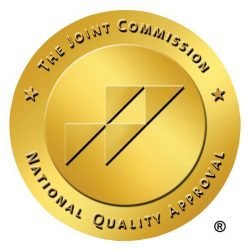THE TREATMENT OF ANOREXIA NERVOSA
When considering anorexia nervosa treatment it is helpful to understand what the process will look like when you step into a treatment center. The initial decision to begin on the path to recovery is a difficult one and having a greater understanding of each step along the way can be empowering. At Alsana, we like to focus on three main areas of the healing journey: stabilization, processing, and integration. Being a dietitian, I will focus on how these phases pertain to your relationship with food. These phases do not always follow a linear trajectory and often will flow back and forth between each other throughout the course of treatment.
Stabilization
The first step is to focus on stabilization. An initial question we often receive is, “What does stabilization look like with food?” The primary goal of stabilization within the meal plan is to help support you with a structured eating pattern. After meeting with your dietitian and developing a plan together, the structure often entails gradually working up to a system in which you eat every few hours to help support the body’s ability to store and use energy throughout the day. The makeup of these meals and snacks incorporates all fuel groups that allows you to observe and experience the importance of all foods fitting into daily life. During this stabilization phase, your body can slowly gain trust that it is receiving nutrition consistently, which allows it to begin to function the way it should. Many clients start to experience better cognition, emotional regulation, and connection with others because the body is receiving the nutrition required for their physiological systems to work together.
This, on paper, sounds more straightforward than it is in practice. During the hard work it takes to develop a relationship with food that allows regularity, the use of help from a support system is vital for one to shift the reliance on the eating disorder. It is not recommended for anyone to go through this process alone. The support system is often made up of family, loved ones, peers, and staff. This requires you to practice vulnerability daily through sharing your genuine experience associated with eating as well as in relation to what you are working on in therapy. Discussion and understanding of how emotions impact eating disorder symptoms can create compassion and space for behavior change. It’s necessary to slow down and notice patterns during this process. With time and support, these shifts can develop and slowly become the new normal.
Processing
After the foundation of stabilization is laid with a consistent eating pattern, there can now be a greater understanding of how the eating disorder developed and how varying associations with food came to be. There can be stuck points that arise and prevent different changes from taking place. Being able to look at these points with compassion and curiosity really allows for internal comprehension that can shift symptoms. This process requires internal and external reflections as you are developing alternative ways of coping with discomfort. The allowance of further challenges within the meal plan during this phase creates opportunity for continued processing of what may happen emotionally when there is challenge to the pattern that was developed in the stabilization phase.
What does processing look like with food in practice? This can involve writing out patterns and associations, noticing where these developed and how they translate into behaviors. The processing often requires that a clinician support you with how to effective coping before trying it on one’s own. It requires incorporating flexibility within the meal plan and shifting the consistency that was needed in the stabilization phase. This may include going out to eat, making choices of foods in the moment, or eating something based on preferences. Processing what each of these exposures was like for you allows for different outcomes in the future. What is so great about this phase is that when a task becomes overwhelming, falling back onto the structure (stabilization phase) that was originally developed helps to create resiliency and confidence that you can get back on track after a struggle.
Integration
After working through the stabilization and processing phases, integration can begin. The integration phase allows you to take what you learned from the structure and understanding that you’ve accomplished and put it into practice on your own. This involves an element of autonomy that you may have not been ready for until now. Practicing what you learned on your own, using your support system, and returning to process with your team combines the phases together. This is difficult because you are taking responsibility of your coping skills and implementing them in varying situations. It will not go perfectly, and that is expected. This is meant to be a learning experience with mistakes that you can learn from. Examples of integration would be going grocery shopping on your own, planning and preparing meals for yourself for a whole day, or spontaneously going out to eat with a friend. This can be extremely rewarding as you are able to experience the benefits of the work you have put into recovery. Even when there is a struggle, anything you can do in a different way is a sign of growth.
When you are unsure of what recovery looks like, choosing the path to healing can be arduous. By understanding what to expect, it can provide insight and comfort. Through stabilization, processing, and integration we know that recovery is possible. Remember that when you choose this journey, you are not alone and will be provided with support along the way.

JOIN OUR ONLINE SUPPORT GROUP
Weekly meetings
Fridays at noon / PST

VIRTUAL TREATMENT OPTIONS
Meeting each client where they are on their recovery journey. Virtually.
Our Recommended Articles
Start the road to recovery with Alsana.






